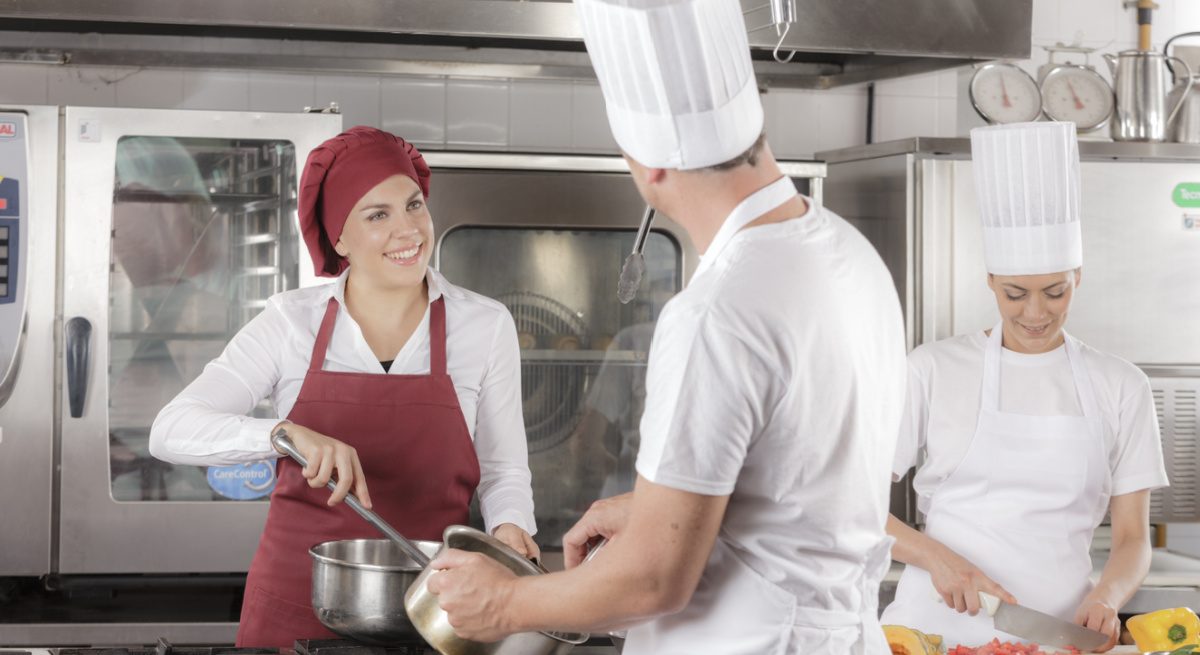Could the Automat Revival Solve Restaurant Staffing Issues?
4 Min Read By Toni Allen
Horn & Hardart gave us a vision of what it means to have a working vending machine with practical utility. The 1950s saw the birth of the first idealized vending machine, an enormous construction made of metal and glass that served thousands of city-dwellers each day and night. No waiters, just steaming plates and a glass door that's opened by a coin.
The ancestors of the first semi-automatic machines to serve food and drink are still in use today, though instead of restaurants and bars, we see them in public spaces, perhaps small shops.
Reportedly the first vending machine was in Berlin in 1895, created by a company named Quisiana. The machine served sandwiches, wine, and coffee, and was considered a great success. A real old-school vending machine.
Japan is another nation that embraced restaurant automation early and still does through its conveyor belt sushi lines that deliver small plates of food around to seated customers. Even international sushi restaurants adapted this model, like YoSushi.
The question is, what is the relationship between current restaurant staffing issues and commercially available automation technology? This is what we discuss in this article.
Present Staffing Issues at Restaurants
Staffing problems can arise in several forms. With the COVID-19 social disruptions, many restaurants still struggle to return to what they might call "normal."
Still, it’s worth discussing the general appeal of restaurant jobs in the first place. Children in school are far from incentivized to work in the catering sector. Waiting and bartending is not among the encouraged list of careers, they’re not considered ambitious enough for the mainstream education sector.
As a result, most students opt-in for higher education and target different vocations, leaving the bar and restaurant jobs for the occasional, part-time worker. Employee turnover rates are one of the highest in the catering industry, though the top services stand out with excellent retention rates.
Nevertheless, staff reliability and motivation are an issue in most chain restaurants. Even the best-performing restaurants with the highest staff retention rates suffered during the pandemic when they had to send their employees on indefinite leaves. Inconsistency became a constant, something that neither the employer nor the worker in need of a steady wage can afford.
Order-Only Automats: Pros and Cons
Perhaps the most common places to spot order-oriented automats are fast-food chains like McDonald's, Burger King, and others. These machines allow customers to order food without talking to anyone until the moment of collection.
The machine presents a comprehensive menu with the ability to partially customize what customers order. Card payments are typically set to default, but in most cases, customers can still choose to pay with cash at the till.
What Are the Pitfalls of Order-Only Machines?
The first thing to address is that the purpose of contactless order is defeated as soon as the customer chooses a cash payment.
Going further, while order customization was introduced to many fast-food chains through the order machines, restaurants with a more customer-oriented approach may find these limited.
This issue falls under orders from your mobile via a QR-scanned menu. In a traditional restaurant, it’s considered simple to ask for what you want, with any side notes on what you wish to remove or add that’s not ‘standard’ on the menu.
Having to create a custom order via an ordering app or an order machine could result in a deterioration of customer-restaurant relations, primarily establishments that rely on personal service and good quality food to create a connection with visitors.
Again, fast food chains are not threatened by this, since the relationship is between the brand and the customer.
Integrating Dispensary Automats: Pros and Cons
It’s unlikely that we’ll see restaurants integrate dispensary machines. We mostly associate these with petrol stations and pop-by stores on a busy high street.
The only sub-sector making a move on vending main meals is currently for salad and light food lovers. If establishments decide to go for easy market entry, we may see a rise in modernized dispensary automats that target special dietary preferences — say vegan, keto, or other specialist diets.
There’s a key problem with dispensary machines. If anything goes wrong with which the customer is dissatisfied, there’s no way to address the problem. Unless there’s someone to remedy the situation who works at the establishment at the question, but that defeats the point of a dispensary machine.
Robot-Restaurants and Robot Waiters: Pros and Cons
If one wants to see robot action in restaurants, look to Hong Kong. Not only do these joints have robot waiting staff, but actual robot chefs.
Now, the pros are simple. Running a robot is likely cheaper than employing a full-time employee, or at least it will be. Besides, once the robot is done with its tasks for the day, it can keep going with preparatory tasks at night. It doesn’t need sleep.
The main concerns around robot chefs and servers are quality of service and maintenance. A robot is unable to match human creativity, so fine dining restaurants are out of the picture for robotics companies as potential clients.
Chain restaurants with boxed ingredients for quick preparation, like Subway, are some of the most likely establishments to invest in robot chefs and servers for an all-on-one fast-food production line.
Customer interaction is important when one takes the time to eat a meal and treat it as an experience. Fast food restaurants hardly belong in this frame, so a robot with a few polite gestures may suffice for the narrow interactivity criteria.
Technological advances make a return to the days of the automat not just a possibility, but a likelihood. The question is no longer “if” but “when” and “how.”


